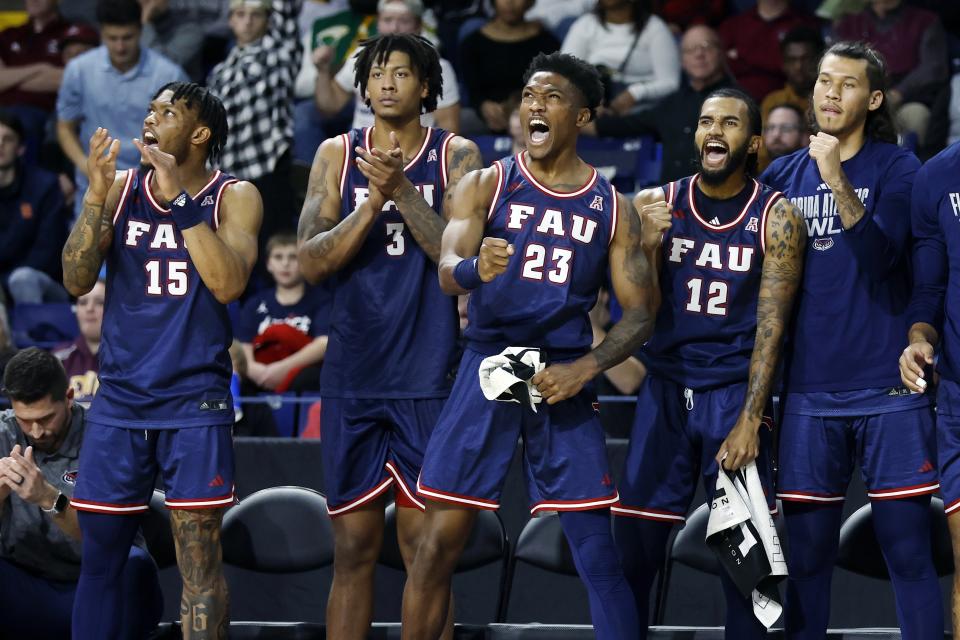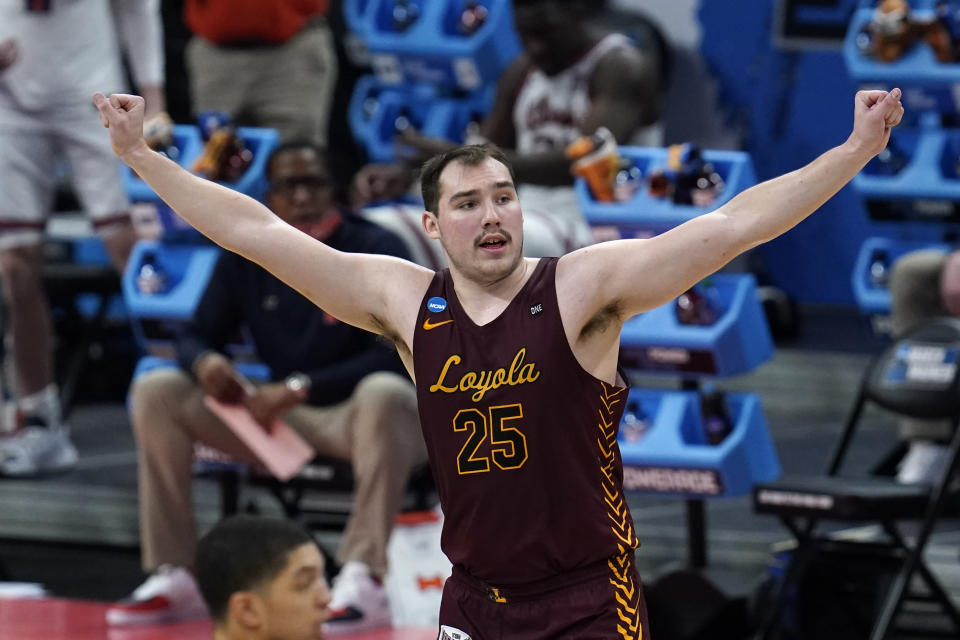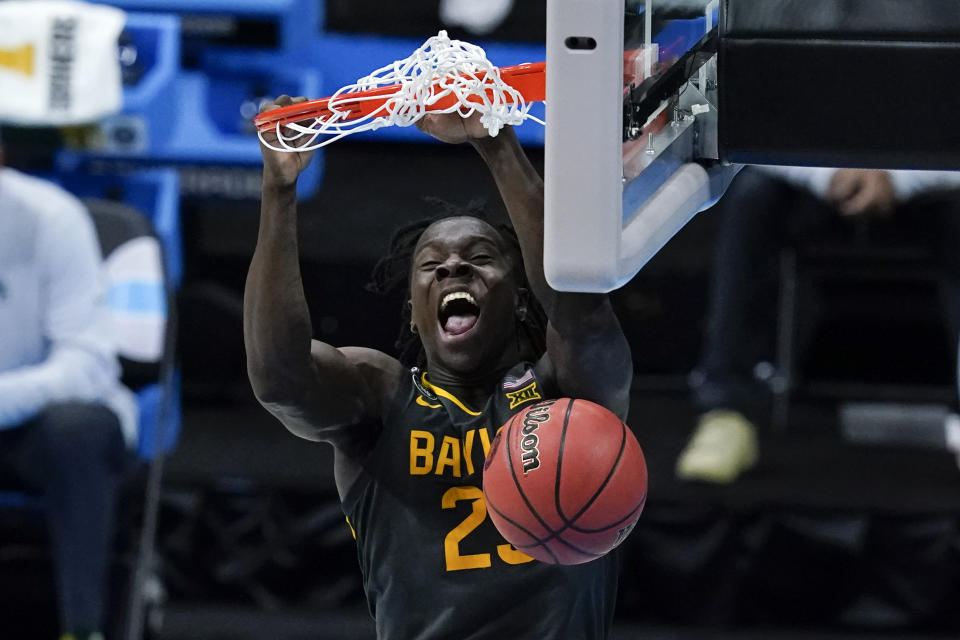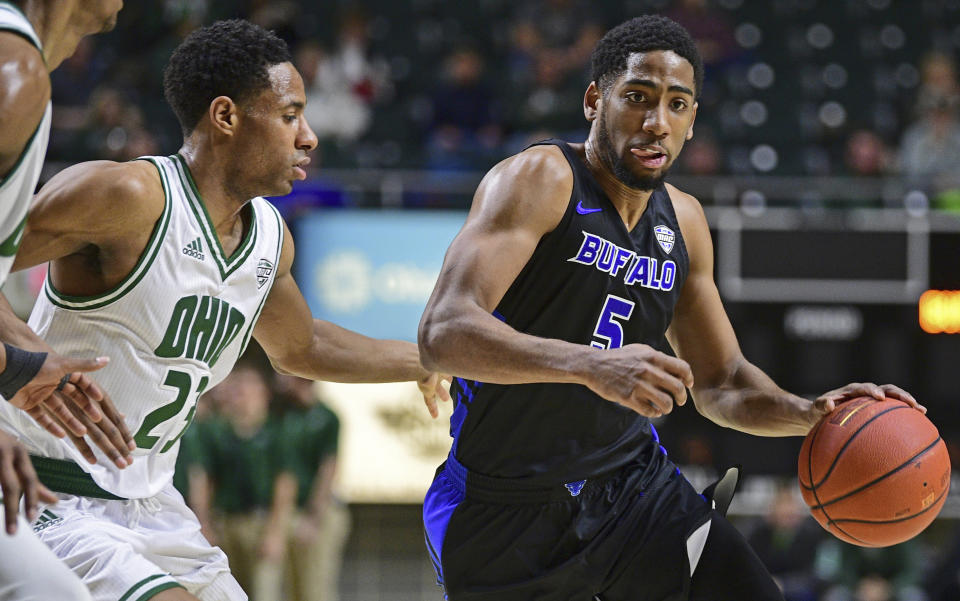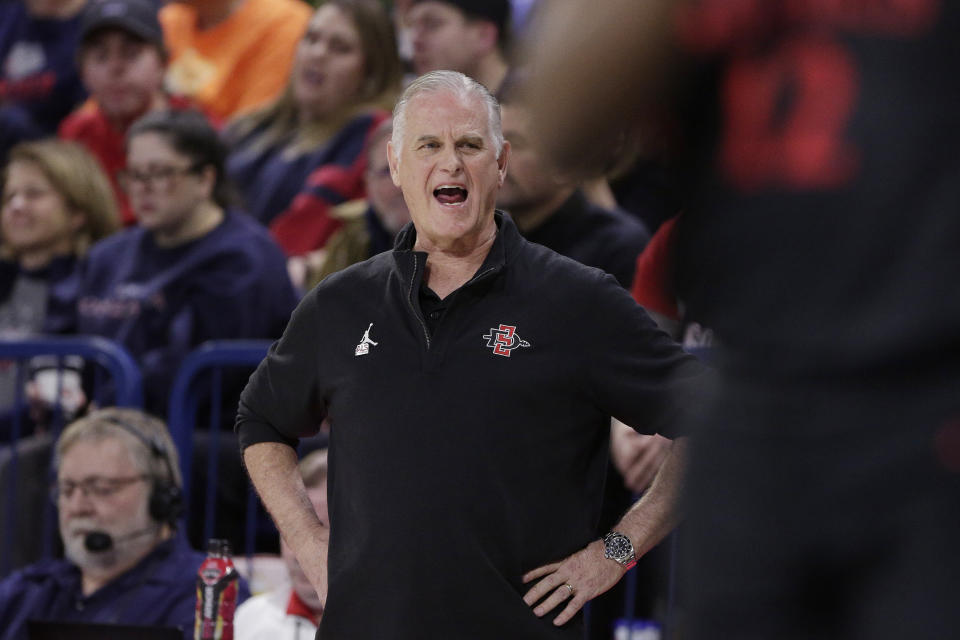Parity, the portal and NIL all driving a new era for college basketball and how teams are ranked
The 2023 NCAA Tournament was unlike any other, a parade of firsts winding down the road to Houston.
None of the No. 1 seeds made it to the Elite Eight for the first time since seeding began in 1979. Not a single top-three team reached the Final Four for the first time ever; instead, the semifinals welcomed three debutant teams for first time since 1970.
“I just think there's more parity than there's ever been,” San Diego State coach Brian Dutcher said of a Final Four that included his Aztecs, Florida Atlantic, Miami and UConn.
College basketball is undergoing a shift, a new era ushered in by the transfer portal, endorsement money for athletes and conference realignment.
Bluebloods like Kansas, Duke and North Carolina have all won championships the past eight years. But so have programs like Baylor and Virginia, while UConn and Villanova have become mini dynasties, combining for five championships since 2011.
The NCAA Tournament has ramped up the madness even more, with No. 16 seeds taking out No. 1 seeds twice in the past six years after going a combined 0-135 before that.
This new era is clear to see with a glance at The Associated Press Top 25 men's college basketball poll, which makrs its 75th anniversary this month.
Buffalo, Furman, Wofford and FAU have been ranked for the first time in the past five years. Rutgers was ranked for the first time in 39 years, reaching No. 24 in 2019-20. Penn State ended a 24-year poll-less streak in 2019-20. College of Charleston was ranked last season for the first time since 2002-03.
Then there's Loyola-Chicago.
The Ramblers had to go back to 1984-85 for their last ranking before returning at No. 22 on Feb. 8, 2021. That came three years after a memorable run with Sister Jean to the Final Four.
New teams also have emerged atop the poll.
Purdue hit No. 1 for the first time in 2021 and is on a three-season run at the top, including the current AP Top 25. Houston reached No. 1 last season for the first time since the Phi Slama Jama team in 1982-83.
Alabama had its first No. 1 ranking in 10 years last season. Auburn was No. 1 for the first time the year before. Same for Baylor in 2020 while Virginia reached the top rung in 2018 for the first time in 36 years.
“What makes college basketball so unique is you can have a Florida Atlantic or a Gonzaga — somebody who doesn’t have big-time football — be really good at basketball and have a chance to win a national championship,” said National Association of Basketball Coaches executive director Craig Robinson, a former head coach at Oregon State and Brown. “That’s what makes it such an appealing product, in my opinion.”
The transfer portal has played a part.
The high-major programs have used the portal to land talented players from smaller schools, but the portal also flows back with players going to mid-majors to get more playing time. And because so many players are available in the portal, big-name schools often wait to offer the non-five-star recruits, opening the door for smaller programs to get into the conversation.
"We're after guys that before the transfer portal we wouldn’t even be talking to because they would be signed by those mid-majors receiving (poll) votes,” Northern Arizona coach Shane Burcar said. “The top 75 and down, the Dukes, North Carolinas and Michigan States are holding off on those guys. Absolutely it’s impacting high school kids.”
Athlete compensation also has played a role.
Having a name, image and likeness collective levels the playing field to a certain extent, allowing smaller schools to dish out a piece of the financial pie to hopefully prevent players from bolting.
The problem: not all schools have the resources or means to create a NIL collective.
"This sort of exacerbates the haves vs. the have nots," Robinson said. “There might be more parity for the schools that can put together a decent NIL package for a player, but for those schools that can't do that, the chasm is growing wider.”
The parity in college basketball has added a new level of excitement for the sport, but could the unpredictability of this new era be coming to an end?
Realignment driven by football revenue has consolidated the Power Five conferences to essentially four after an exodus of 10 members left the Pac-12 on the brink of extinction. The condensing of high-major programs will make the current power conferences even stronger. It also could limit the number of marquee non-conference matchups with the teams playing in the same leagues.
The freedom of the transfer portal will continue to be a boon for high-major programs to poach talent from smaller programs — even if mid-majors do get some benefit from it.
And NIL, while helpful to mid-majors that can utilize it, will favor the larger programs with deeper support.
“I'm being a little bit facetious here, but pretty soon we could be down to two conferences," Robinson said. "I don't think that's going to happen — I'm being a little bit tongue and cheek here — and from a football standpoint that might be beneficial, but it might not be for basketball. We won't know how this is all going to look for a minute.”
___
For more stories on the 75th anniversary of the AP Top 25: https://apnews.com/the-ap-top-25-at-75. And more AP college basketball: https://apnews.com/hub/ap-top-25-college-basketball-poll and https://apnews.com/hub/college-basketball
